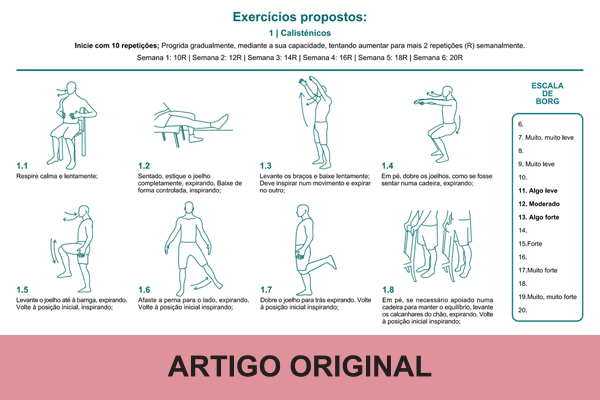SOCIAL MEDIA
Portuguese Medical Association's Scientific Journal

Introduction: New evidence and extrapolated data from other coronaviruses suggest that symptoms and consequences of COVID-19 may persist beyond the cure. The aims of this study were to evaluate persistent symptoms after SARS-CoV-2 infection and its impact on physical condition, activities of daily living, and quality-of-life; establish whether symptom persistence is associated with higher disability; and document the evolution of the multiple domains after a home exercise program.
Methods: Prospective study with patients referred to a Physical and Rehabilitation Medicine clinic, after SARS-CoV-2 infection. Patient evaluations, including a symptom questionnaire, the 1-Min Sit-to-stand test (1-MSTS), the EQ-5D questionnaire and the London Chest Activity Daily Living (LCA-DL) questionnaire, were performed before and after a home exercise program.
Results: Seventy-four patients were included. The majority (n = 71) had been hospitalized (mean stay 19.66 ± 13.35 days), 51% required intensive care. At first evaluation, 54 days after symptom onset, a mean of 18.6 repetitions in the 1-MSTS were performed. The percentage of LCA-DL was above 28% in 23% of the patients. Impairments on EQ-5D were present in 44% for mobility and 44% for anxiety/depression. Mean EQ-5D VAS was 66.5 out of 100. Fifty-one (70%) had at least one persistent symptom (Symptomatic Group), while 22 (30%) were asymptomatic (Asymptomatic Group). The Symptomatic Group had statistically significantly worse mean results on 1-MSTS (16.8 vs 22.9; p < 0.001), % LCA-DL score, EQ-D5 (7.8 vs 5.7; p < 0.001) and EQ-D5-VAS. No patient characteristic, clinical background, comorbidity, or hospitalization characteristics was significantly different between groups. Every patient was given a home exercise program; 47 patients joined an additional rehabilitation program or were clinically discharged and were therefore excluded from the second evaluation. Twenty-seven patients participated in a second evaluation. In the matched analysis, mean 1-MSTS improved by 3.4 repetitions. Mean LCA-DL, mean EQ-5D score (7.1 to 6.6) and EQ-VAS score changed favourably and significantly.
Conclusion: Two months after infection by SARS-CoV-2, persistent symptoms were frequent in patients referred to a Physical Medicine and Rehabilitation clinic. Additionally, the SARS-CoV-2 infection, as well as the persistence of symptoms, had a negative impact in the physical condition and functionality in ADL and quality-of-life. With a home exercise program in place, a statistically significant improvement was observed. Referral of patients with persistent symptoms to Physical and Rehabilitation Medicine may be warranted.
Click here for the full paper